This month, Greater Good features videos of a presentation by renowned psychologist Paul Ekman on “Darwin, Compassion, and the Dalai Lama.” In his talk, Ekman reveals the similarities between Darwin’s and the Dalai Lama’s perspectives on compassion, and he provides an overview of different forms of compassion, ranging from the most elementary to the most exceptional and heroic. Many writers group these phenomena together, explains Ekman, without realizing they’re talking about different things.
Below is a guide to understanding what these varying forms of compassion are and why they’re so important.
- Emotion Recognition is the easiest—the sine qua non. It’s knowing how another person is feeling. Most people don’t need to be taught it, though people with Asperger’s, autism, or schizoprenia do. Realize that the torturer needs emotion recognition: to know how you feel doesn’t imply whether I’m going to try to relieve your suffering or inflict it, or just have no concern. But if I don’t know how you’re feeling, everything else just falls by the wayside.
- Emotional Resonance is what Bill Clinton does: “I feel your pain.” I distinguish between two types of resonance: Identical Resonance is when you realize that someone is in pain and you actually physically experience that same feeling yourself. But when you say, “Oh, you poor baby! I’m so sorry you’re feeling that way. What can I do to help you?”—that’s Reactive Resonance.
Everybody loves people who resonate; resonance is crucial to our relationships with our loved ones. But if you’re like my daughter, an emergency room worker in San Francisco’s only trauma center, if you feel other people’s pain for 8 or 12 hours a day, you’ll burn out. The Dalai Lama says he feels others’ pain, but just very slightly and just for a few seconds, then it passes.
Not everyone resonates: There’s reason to believe that people with anti-social personalities don’t resonate, but they’re able to act as if they resonate, because they know other people like it, and that allows them to manipulate others.
- Familial Compassion is the seed of compassion, planted through the caregiver-offspring bond. It raises very interesting questions about people who were brought up without a single caregiver, or were brought up with a parent who had a very distant attachment. What is their capacity for compassion? Both the Dalai Lama and Darwin would say that they’re going to have problems—without the seed, the flower won’t grow.
- Global Compassion was exemplified by the response to the 2004 Indian Ocean tsunami. People around the world extended assistance to strangers, of different races and skin colors. Now, we know that not everybody has it—a lot of people acted, and a lot of people didn’t. How do we cultivate global compassion? I consider this one of the most crucial questions for the survival of our children and grandchildren, because the planet won’t survive without global compassion. We’ve got to try to see what we can learn from those who have it without training.
- Sentient Compassion is when you extend feelings of compassion toward cockroaches, toward any living being. We don’t know whether people who have global compassion have sentient compassion. But my hunch is that if you’ve got sentient, you’ve got global. The Dalai Lama and Darwin agree that sentient is the highest moral virtue.
- Heroic Compassion is like altruism with a risk. It has two forms: Immediate Heroic Compassion is when, without thought, you jump onto the subway tracks to rescue someone. It’s impulsive.
Considered Heroic Compassion isn’t done impulsively; it’s done with thought, and it can be maintained for many years.
Kristen Monroe, a political scientist at the University of California, Irvine, has done a study of people with heroic compassion, and here are her criteria for it: 1) you must act—not just think about how good it would be to act; 2) your goal is the welfare of the other person; 3) your action has consequences for that person; 4) there’s a good possibility your actions will diminish your own welfare—you’re putting yourself at risk; 5) and you have no anticipation of reward or recognition.
Again, we know that some people demonstrate heroic compassion without training. How’d they get it? What can we learn from them that will allow us to help other people develop it?
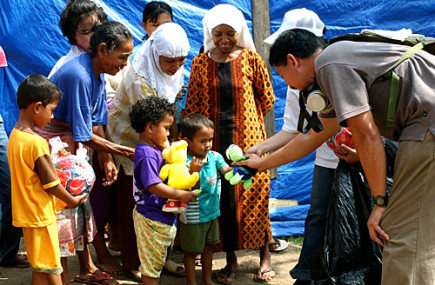 © United States Navy/Petty Officer 2nd Class Timothy Smith
© United States Navy/Petty Officer 2nd Class Timothy Smith

 ©
© 
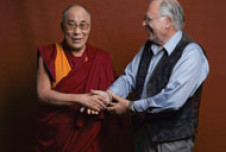

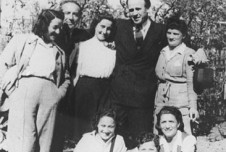
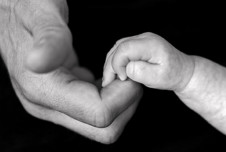
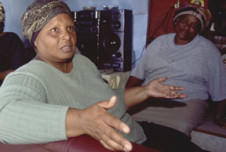

Comments
Thank you for these distinctions - I will quote it often
in my emotional intelligence trainings.
Patricia Clason | 8:15 am, June 27, 2010 | Link
Mr. Ekman,
It is very hard to raise a child in today’s society who exhibits the levels of compassion that you dicuss. Bullying, shaming, shunning by parents of classmates and school administrators is used to humiliate a child who is deeply good. We’ve been there. It has been heartbreaking.
Our only option has been to homeschool. Amazingly, we’ve found other children in the homeschool community who also have a true and deep empathy.
Our family was shunned and humiliated because we cared and enjoyed giving… like we were being good to get favors or something. Anything good was twisted around as though it was manipulative when it was not. It has been very hard to be shunned and maintain a positive and good view of the world, but we are trying.
Cheryl Perko | 6:44 pm, July 7, 2010 | Link
Great distinctions, clear and concise - would love, with your permission to share with one of my support groups.
psychotherapi | 10:14 am, July 17, 2010 | Link
If “sentient is the highest moral virtue” then it would
seem that bringing an end to the abortion industry
would be among the most urgent priorities for anyone
genuinely interested in compassion.
j.a.m. | 7:35 pm, August 5, 2010 | Link
This resonated with me particularly the “cost” as I have 200 people knitting for the recent earthquake victims in Tibet and have sent around 1500 items of pure wool, made with love, jumpers, scarves and beanies to Tibet. It’s has been the most touching experience of people’s generosity (both the giving and receiving) but I have felt so alone in the co-ordination of it and am so exhausted that I’m now making silly mistakes (like 2 speeding fines in 1 week and leaving my purse in a shopping trolley) !!! Oh well - facing my limitations is part of it I guess.
Jo McAlpine | 4:29 pm, September 28, 2010 | Link